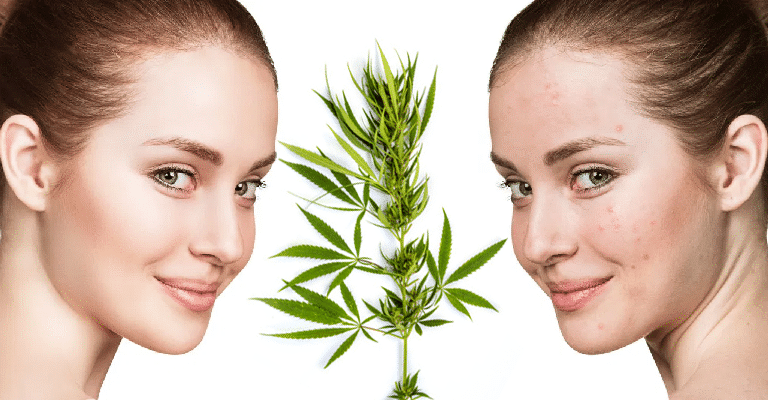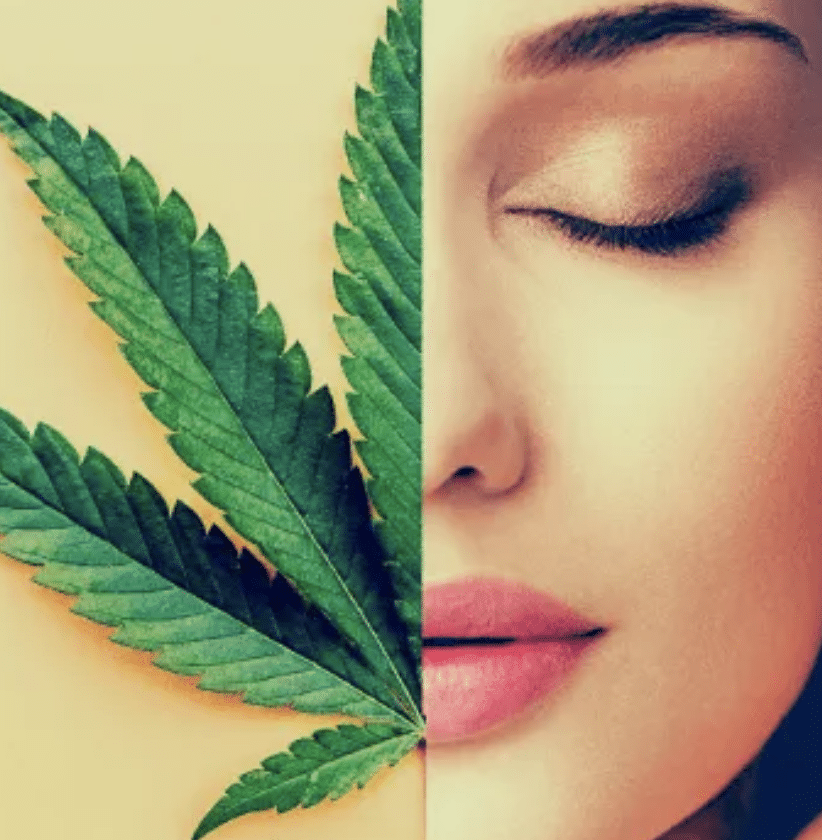
Cannabidiol for acne is a substance that could potentially be effective if some specialists believe it. It remains to know the mechanisms of action to know how to treat this condition with multiple causes and unpleasant symptoms.
Acne is a well-known disease that affects around 15 million people in France (mainly adolescents but also 20% of adult women). Besides the obvious discomfort it causes, acne also causes a certain psychological suffering: withdrawal, loss of confidence, shame … It is therefore not surprising that acne (with eczema) is the most frequent reason for consultation in the UK.
There are many creams, ointments or dietary supplements on the market that claim to make acne go away. However, it is well known that only isotretinoin (the active ingredient derived from acidic vitamin A) contained in Roaccutane is truly effective in reducing, or even completely eliminating acne.
However, it is well known that almost only the isotretinoin (the active ingredient derived from acidic vitamin A) contained in Roaccutane is truly effective in reducing or even completely eliminating acne.
Not without risks, this molecule can cause various physical side effects (dryness of the mucous membranes, anemia, headaches, etc.) but also psychological ones. From depression to suicidal tendencies, the undesirable effects of this drug are often pointed out, should not be underestimated in terms of probability. It should also be noted that pregnancy during treatment is to be avoided since the unborn child could develop serious malformations.
Cannabidiol for acne : looking for a natural alternative
In light of the facts exposed above, researchers are exploring other soft and natural solutions.
Cannabidiol (commonly known as CBD) has already demonstrated its potential effectiveness in the management of conditions as diverse as epilepsy, fibromyalgia and muscle spasms. Would CBD also be useful for the treatment of acne?

Cannabidiol has a “sebostatic” effect, according to a study in the Journal of Clinical Investigations. In other words, it could regulate the secretion of sebum, which is induced by the sebaceous glands. Sebum is an oily film that protects the skin, which in itself is beneficial. However, it becomes problematic when it is produced in excess. It then forms unsightly and painful pustules: acne. Cannabidiol for acne would therefore be indicated to fight against excessive sebum production.
The secretion of sebum is highly dependent on hormones and it therefore makes sense that adolescents are the most affected by acne, since they produce a greater quantity of sex hormones (testosterone and estrogen) than the adult population.
These elements would tend to confirm the usefulness of cannabidiol in the prevention of “flare-ups”, these episodes of strong bacterial proliferation on the skin which generates a rapid multiplication of the number of blackheads on the face. Environmental and lifestyle factors are often the cause. We are talking here of course about atmospheric pollution, but also about the many hormonal and / or endocrine disruptors which can have serious consequences both on health in general and on dermatological health in particular.
Still according to the same study, cannabidiol not only suppresses sebum production, it also has an anti-inflammatory effect on the dermis.
source: www.jci.org
Cannabidiol for acne for dermatological use is today available in many forms: ointments, balms, pastes, tinctures or cbd oils to name a few. However, it is important to carefully check the ingredients and their dosage to avoid any unpleasant surprises during application. Indeed, the cannabidiol market has grown considerably and unscrupulous players sell products of questionable quality. The precautionary principle also applies to your skin …
We discussed the potential for regulating and stabilizing cannabidiol in the treatment of acne. More broadly, cbd could also be used effectively for other skin problems. According to specialists, this molecule could improve the quality of life of people suffering from specific dermatological ailments, such as epidermolysis bullosa.
This serious orphan disease (only 500’00 cases recorded worldwide) causes bruises and even extremely painful sores upon contact. A caress would even be enough to trigger dermatological “cracks” that could potentially lead to a severe infection.
This genetic disorder affects not only the skin, but also the internal mucous membranes such as the esophagus, which can be damaged by the simple ingestion of food.
Although this disease is incurable, it seems possible today to be able to relieve the pain of patients – and this from the first days of life – with innovative substances, in particular by the application of balms based on cannabidiol.
The study we are basing on emphasizes that the cannabidiol treatments were not recommended by their treating physicians and that the people concerned acted on their own. Ironically, this study highlights the lack of more in-depth studies on the subject and broadly questions the passivity of the scientific community, especially with regard to the results obtained.
As we can see, there is still a lot to be done in terms of raising awareness among the medical profession and the general population to remove the stigma – or at least the negative connotation – that CBD carries, simply because of its origin. Cannabidiol for acne or any other form of skin condition must therefore still prove itself, but we hope that the facts presented will comfort you in the idea that its effectiveness has been demonstrated.
Cannabidiol for acne or for diseases as serious as epidermolysis bullosa, an innovative idea that is slowly gaining ground.
Sources :
Cannabidiol exerts sebostatic and antiinflammatory effects on human sebocytes
https://www.jci.org/articles/view/64628
Self-initiated use of topical cannabidiol oil for epidermolysis bullosa
https://beyondthc.com/wp-content/uploads/2018/06/CBD_topical_blisters-2.pdf
